Many people don’t know the difference between slab vs. crawl space foundations. That’s why we wrote this article. Here you’ll learn what slab foundations are, what crawl space foundations are, their different types, and their pros and cons.
Slab vs. Crawl Space Foundations
Usually, slab foundations are made of a six-inch thick layer of poured concrete, footings, and steel reinforcement bars. Here are a few different types of slab foundations.
- On-grade slab styles (monolithic) – Monolithic means that the concrete slab and footings are poured and cured simultaneously to create a single unit.
- Conventional foundations (t-shaped) – Conventional t-shaped foundations contain heavy-duty reinforcements and footings that run deep below the frost line (the maximum depth of ground below where the soil does not freeze in winter). These foundations are usually used in frost-prone areas and contain stem walls that extend above the footing with a layer of concrete block between them.
- Raised slab foundations – A raised slab foundation can be compared to a combination of a slab and a crawl space. Builders will construct a perimeter wall and footings for support, filling the center space with rock or soil for drainage. They then pour a layer of concrete over the rock and soil, creating a taller slab than usual. These foundations are usually used in areas prone to extreme weather and flooding.
- Floating slabs – Floating slabs are made with detached footings that don’t anchor into the ground or contain no footings at all. Floating slabs are usually made for sheds and not residential homes.
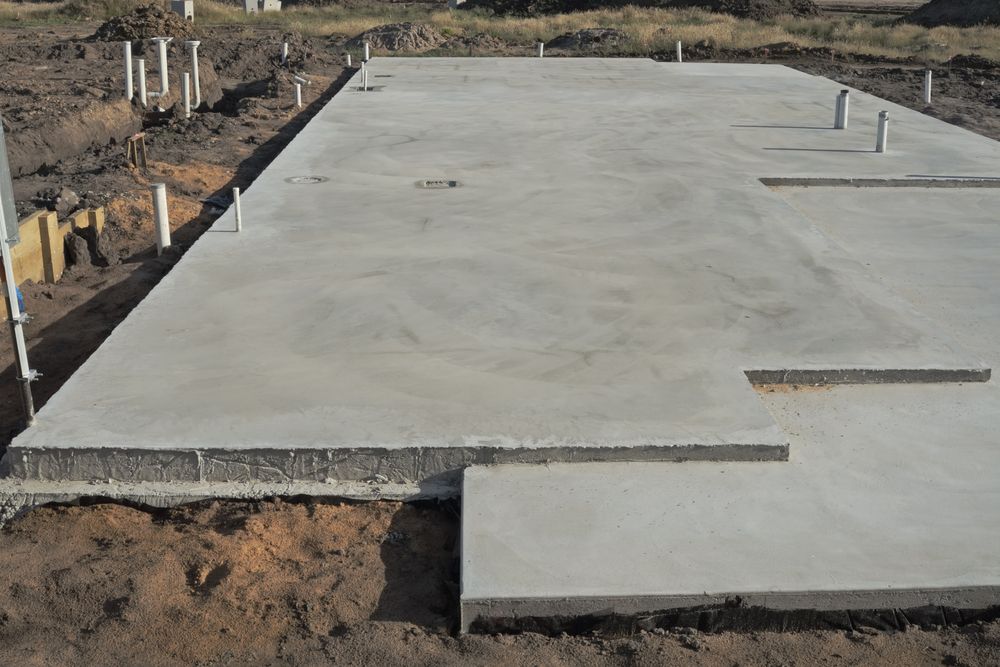
Slab foundations come with a few different pros and cons.
- Pro: slab foundations are less expensive to build – Slab foundations usually cost around $4,500 to $12,000. Crawl space foundations, on the other hand, usually cost around $8,000 to $21,000. In slab foundations, water and sewer lines are buried directly underneath the slab, unlike crawl space foundations which can require additional digging in order to bury plumbing lines below the frost line.
- Pro: slab foundations require less maintenance – Both slab and crawl space foundations can last well beyond 50 years with proper maintenance and regular inspections. But, crawl space foundations usually require more upkeep to prevent mold, animal infestations, and structural damage. You still want to pay attention to trees and their root systems since those can make their way under your slab and push upwards, causing it to crack.
- Pro: slab foundations are more energy efficient – Crawl space foundations need to have vents, insulation, or a dehumidifier to regulate the moisture and temperature below your home. Otherwise, humidity can build up in your crawl space and raise temperatures throughout the rest of your home. In order to keep plumbing lines from freezing, most building codes require them to be insulated or wrapped in electrical heat tape. Overall, slab foundations don’t require any of these precautions.
- Con: slab foundations are not suitable for colder regions with deep frost lines – In colder regions, soil can freeze and heave, exerting pressure on your foundation, which can cause it to crack, shift, or settle. That’s why the footings need to reach below the frost level. This makes crawl space foundations and basements more ideal since their footings reach deeper into the soil.
- Con: slab foundations make it harder to access buried plumbing lines – Because plumbing lines are buried underneath your foundation, the concrete will need to be chipped away in order to access them.
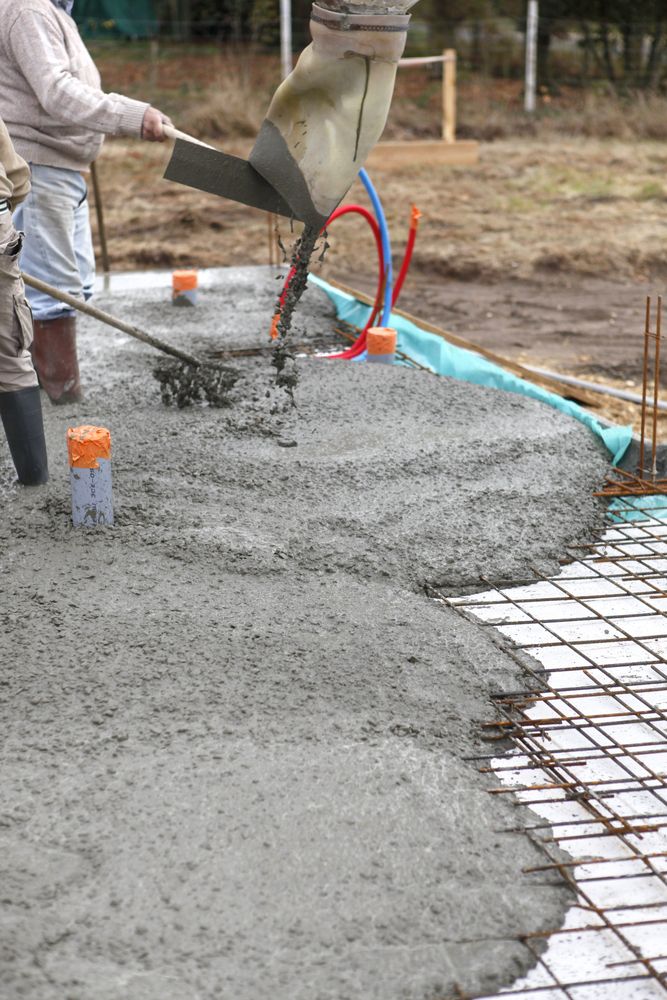
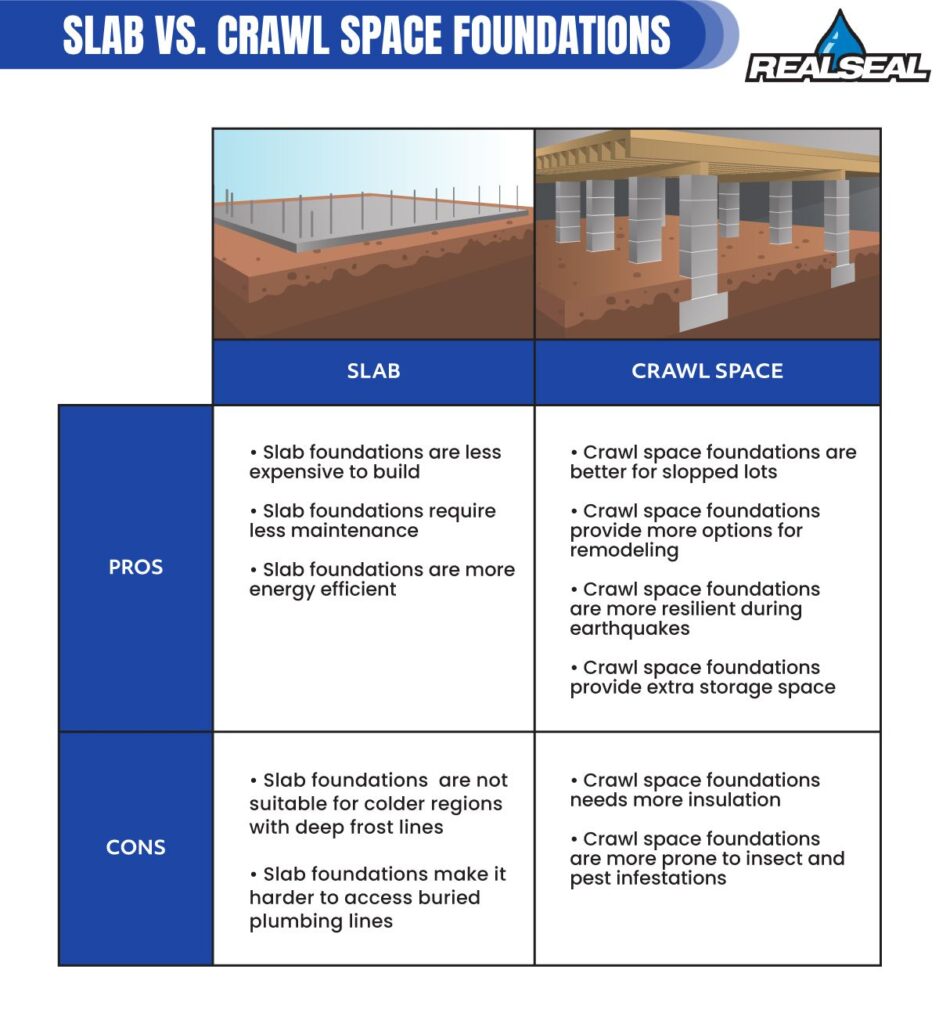
Crawl Space Foundations
A crawl space is an elevated foundation with support footings usually raised 18 inches to 4 feet off the ground. Crawl space foundations can either be supported by concrete cinder blocks, concrete piers, or wooden piers (also called pier and beam). Here are a few different pros and cons that come with crawl space foundations.
- Pro: crawl space foundations are better for sloped lots – Crawl space foundations don’t require as much excavation as slab foundations need for sloped lots. Slab foundations need a flat or nearly flat surface where only minimum excavation is required. Otherwise, your property would need to be leveled using extensive excavation.
- Pro: crawl space foundations provide more options for remodeling – If you’re thinking about moving your kitchen or adding an additional bathroom, you’ll have to break apart your slab foundation in order to access the plumbing beneath it. With crawl space foundations, the plumbing lines are easily accessible and can be moved if needed.
- Pro: crawl space foundations are more resilient during earthquakes – Slab foundations can crack or shift during an earthquake, leading to potential thousands in repair costs. Crawl space foundations are not sitting directly over the ground, making them more flexible and resilient.
- Pro: crawl space foundations can provide extra storage space – We only recommend storing items in your crawl space if it’s encapsulated with a vapor barrier. Otherwise, boxes, furniture, or anything else you store could suffer from moisture damage and rot.
- Con: crawl space foundations need more insulation – Crawl spaces can retain a lot of moisture during wetter seasons, creating a damp environment that can lead to mold growth and wood rot. This is why most crawl space repair experts recommend installing a vapor barrier and drain tile to counter any moisture and groundwater. Read more: Foundation Sealing: Keeping Basements & Crawl Spaces Dry.
- Con: crawl space foundations are more prone to insect and pest infestations – Because of the open access underneath your home, pests like raccoons or opossums might try to make your crawl space their home during colder seasons. Wasps and rats could even build nests inside that open space. This is why it’s very important to conduct regular crawl space inspections.
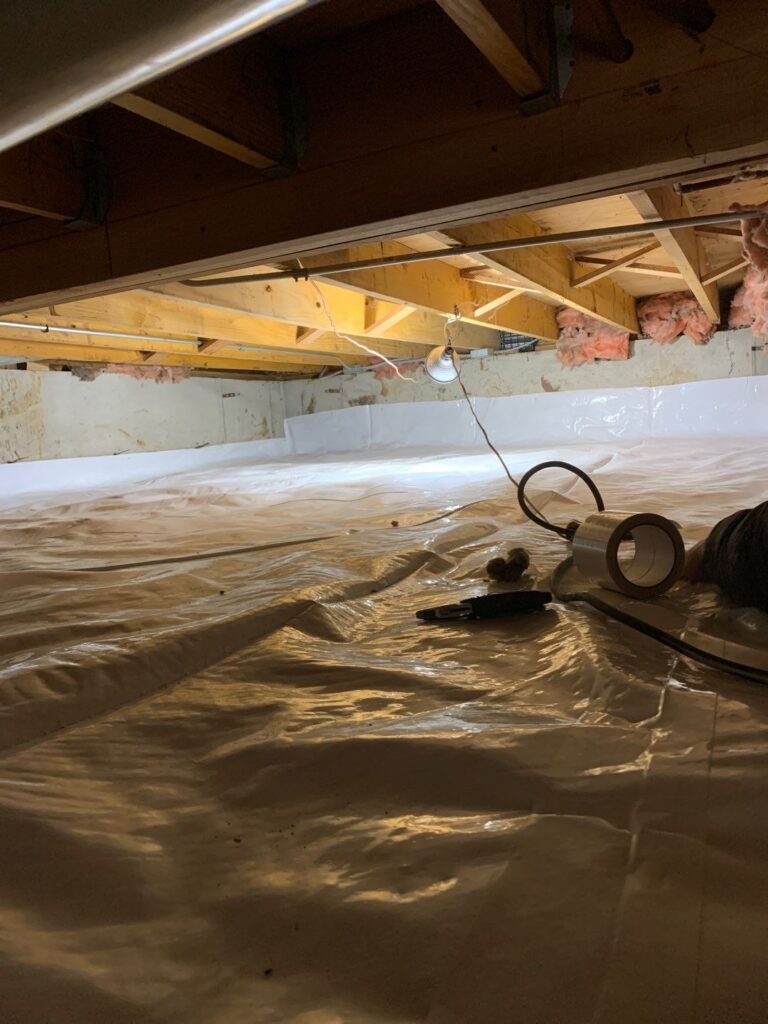
Repair Methods
Here are a few different repair methods most commonly used by foundation repair professionals.
- Slab foundations – If your slab foundation is sinking or settling, foundation repair experts will use underpinning to lift your home back to the maximum practical level (or the ultimate amount of foundational lift achievable before the piers cause any damage to your home). Read more: Underpinning: The Foundation Solution That Works.
- Crawl space foundations – If your crawl space is sloping or sagging, experts can replace any failing I-beams with brand-new steel supports that will lift your crawl space and stabilize your foundation. Read more: The 3 Most Common Causes of Sagging Crawl Spaces.
Who Can Repair Slab And Crawl Space Foundations Near You?
If you live in the Greater Chicago area and your slab or crawl space foundation is failing, who should you call? Get in touch with The Real Seal today! Since 2011, we’ve been repairing and waterproofing all sorts of foundations. We also provide basement repair, foundation crack repair, concrete leveling, and more. Call today for your free inspection and estimate.
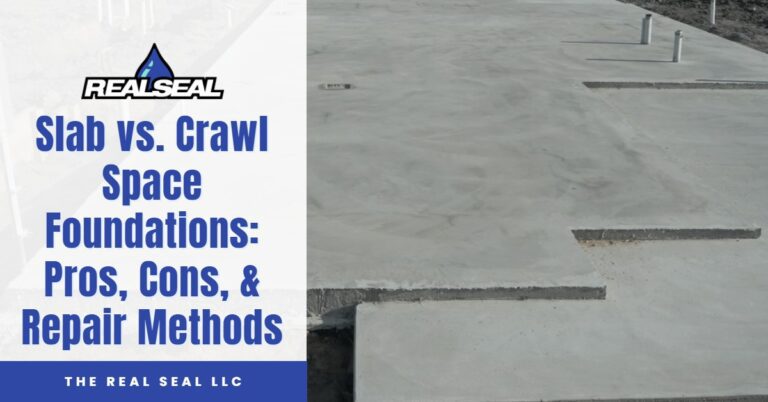
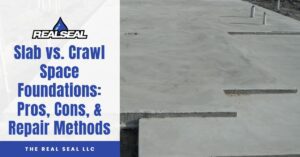





4 Responses
this estimate is for how big of the construction space. We have a project for a crawl space foundation for an 800 sqft addition, was wondering how much would it cost for the foundation only. to get an average idea for budgeting.
Hi Divyanshu! It is very difficult to give even a ballpark with such limited information. Foundation Repair or Waterproofing? New or Existing? The best thing to do would be to have someone come out to provide an estimate.
Hi, I purchased a Condo 12 years ago, 4 condos too 1 building I’m on the end and a sewer lift station is located 20 feet from my back door. The foundation is now under ground, I have bugs in my house on all floors, humidity. Would like your opinion on this please. I’m unable to get help from anyone.
Hi Lucile!
I’m sorry you’re dealing with this situation. I assume there is a property manager and/or association for the building, have you tried reaching out to them? Otherwise a plumber should come inspect the lift station for leaks, and a foundation repair contractor should come out for an evaluation.
If your association or property manager are unwilling to address the issue, you can review the association by-laws to see who the responsibility falls upon and take further action.
I hope this helps! Let us know what happens.